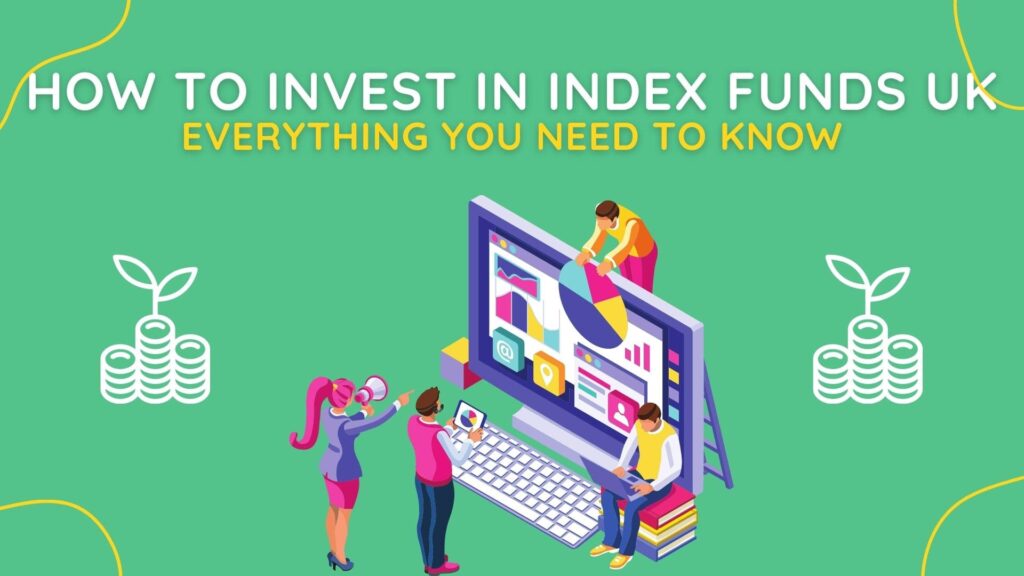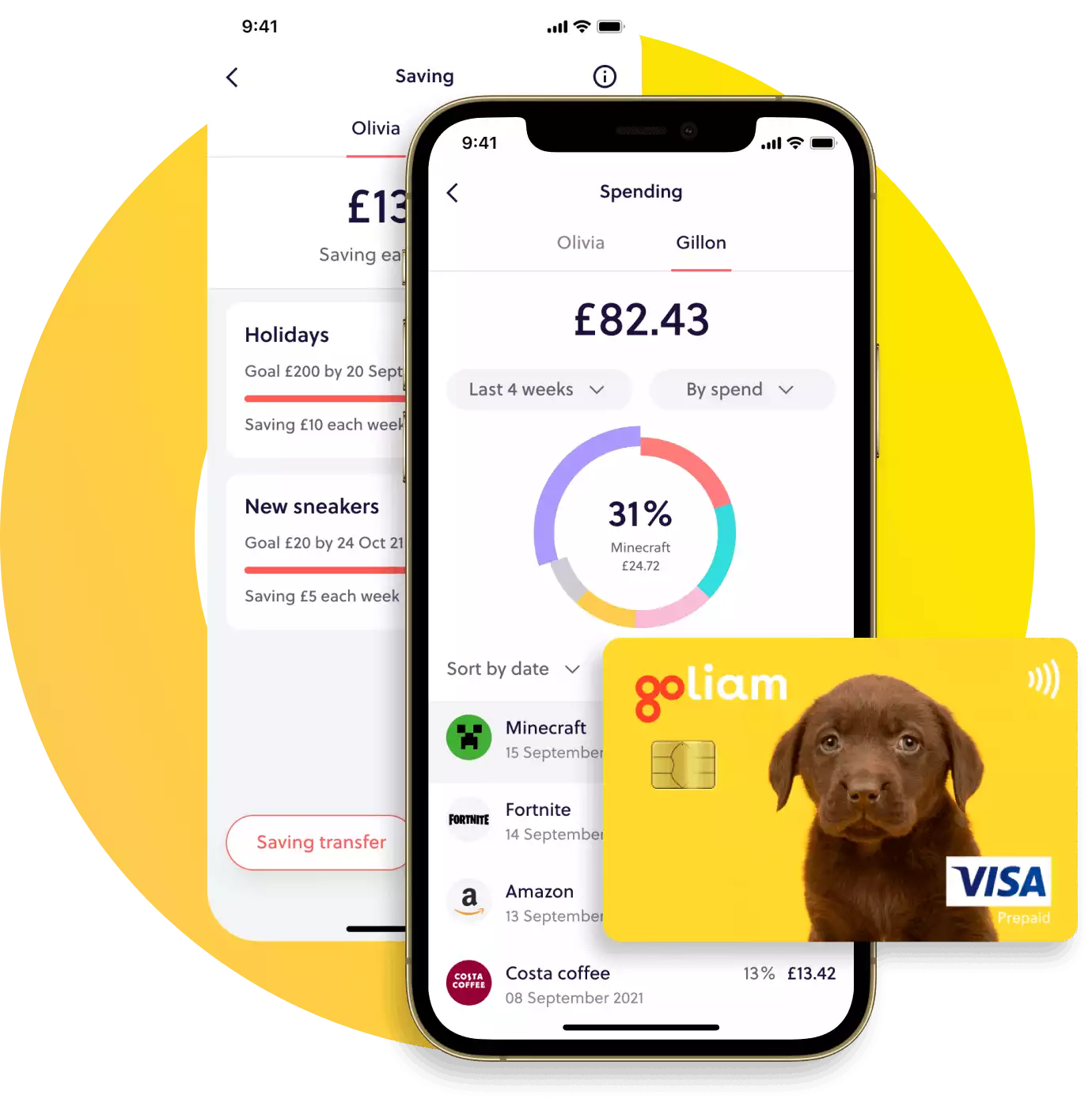
Sammie Ellard-King
I’m Sammie, a money expert and business owner passionate about helping you take control of your wallet. My mission with Up the Gains is to create a safe space to help improve your finances, cut your costs and make you feel good while doing it.

Quickfire Roundup:
Investing in index funds in the UK thankfully is very easy and simple. This one of the reasons why they’re so attractive to all levels of investors.
Not only are they easy they’re also very difficult to outperform as shown by legendary investor Warren Buffett in his 2010 bet with the hedge funds.
However, like with all investments they come with risks but index funds can be considered one of the less riskier ways of investing in the stock market.
Before getting started, it’s important to understand what Index Funds are, develop an investment strategy, and differentiate between Index Funds and ETFs.
By doing so, investing in popular indices like the S&P 500 and FTSE 100 or 250 becomes more manageable.
In this guide, I’ll be taking you through everything beginners need to know about index funds.
So, put on your thinking caps, and let’s get into it or if you prefer you can just watch our video on index funds below.
Table of Contents
How To Invest In Index Funds UK
To invest in Index Funds in the UK you need a brokerage account. Here are some steps to take before you invest.
Research, research, research: Before you invest you need to know the ins and outs of what Index Funds are and how they work. Look for key terms like tracker funds, mutual funds, and actively managed funds and find out what they mean.
Choosing the right broker: choosing the right brokerage account is pivotal. You’re looking for one with low fees, preferably with an ISA, a wide range of investment options and has a great user experience.
Create an investment strategy: This will help you to decide the types of investments you’ll need to reach your overall investment goals (long-term or short-term).
Choose an investment fund: Based on your investment strategy, choosing an index fund becomes easier. Finding a low cost index fund that tracks the S&P500, FTSE or Nasdaq is a good place to start.
Learning how to buy index funds is actually pretty easy.
In fact, it’s just a case of selecting the fund and buying it – other than that you don’t need to check it all the time like individual stock investing and can almost have a set-it-and-forget-it type approach.
For me the best place to buy an index fund is with Trading 212 or with InvestEngine – they have a wide selection of funds, its free to sign up plus you can get nice bonuses with our link.
Or you can check out the full list of the best places to buy ETFs.
Listen To This Podcast Episode 💯
Join us with Jordan from Save & Invest UK to discuss all about how he’s grown his wealth investing in index funds.
We also discuss the power of compound interest, how not to make investing mistakes and the power of generational wealth.
Also get access the entire back catalogue of podcast episodes here.
What is an index fund?
An index fund is a type of mutual fund or exchange-traded fund (ETF) designed to mirror the performance of a specific market index, such as the FTSE 100 or the S&P 500.
Think of it as a financial basket containing a mix of investments that reflects the composition of the index it tracks.
For instance, if you invest in a FTSE 100 index fund, you’re essentially buying a small slice of each company listed on the FTSE 100.
The beauty of index funds lies in their simplicity and efficiency – they automatically adjust to match the index, reducing the need for active management.
Why invest in index funds?
Diversification: One of the key strengths of index funds is diversification. By investing in an index fund, you spread your investment across numerous companies and sectors, which helps mitigate risk.
Cost-Effective: Index funds are typically less expensive in terms of fees compared to actively managed funds. This is because they are passively managed, aiming simply to track the market, not outperform it.
Simplicity: For new investors or those who prefer a hands-off approach, index funds are ideal. They remove the complexity of picking individual stocks and provide a straightforward investment path.
Proven Performance: Historically, index funds have often outperformed actively managed funds. A significant factor here is the lower fees, which can erode returns over time in actively managed funds.
Transparency: Index funds offer high transparency. You know exactly which index your fund is tracking and can easily see which companies you’re invested in.
Lower Risk of Manager Error: Since index funds are not dependent on a fund manager’s stock-picking skills, they avoid the risks associated with human error in investment decisions.
Accessibility: With the rise of online investing platforms, index funds have become more accessible to the average investor, allowing easy entry into the stock market.
Consistency: Index funds offer a consistent investment strategy – they’re designed to track the market, not beat it. This means fewer surprises in terms of performance.
Long-Term Potential: Index funds are often recommended for long-term investing. Their structure is suited to benefit from market growth over time, aligning well with long-term financial goals like retirement savings.
Automatic Rebalancing: As companies in the index grow or shrink in value, the fund automatically rebalances to stay in line with the index, ensuring your investment remains aligned with your chosen market.
Index funds vs ETFs
It’s essential to understand the difference between index funds and exchange-traded funds (ETFs).
Index funds and exchange-traded funds both allow you to invest in multiple companies within specific industries. These investments are referred to as stocks.
ETFs can be traded throughout the day, while index funds are valued at the end of the financial day. They’re also managed by Fund Managers who pick what goes into them.
They’re not restricted like an index is and can follow sectors, countries or continents.

Generally, if you have a long-term investment strategy, index funds may be more suitable. If you want to get in and out of trades a little more quickly, I’d suggest ETFs.
Personally I have both.
Both options are great ways to diversify your portfolio because you can invest in a range of different stocks throughout multiple industries. If one stock goes down, it shouldn’t affect your overall investment too badly, because your money is dispersed across multiple stocks.
What are best index funds UK?
Here’s a list of some of the most popular index funds across the globe:
Vanguard FTSE Total Stock Market Index Fund
Vanguard S&P500 Tracker Fund
Fidelity U.S. Sustainability Index Fund
Fidelity Total Market Index Fund
Fidelity ZERO Large Cap Index Fund
If you’re planning to invest a decent amount, I’d recommend seeking out an independent financial adviser to get you started on the right foot.
If you’ve got some experience in the financial game, you can start making investments that could provide a monthly income. Just be sure you’ve got a solid strategy to keep you on track!
If you want to know more about Vanguard you can read our full Vanguard review.

Tips for index fund investing
Here are some tips for selecting the right index fund for your needs:
Start Early: The sooner you start, the more you can harness the power of compound interest.
Regular Investments: Consider setting up a monthly direct debit to invest in your chosen index fund. This approach, known as pound-cost averaging, can help smooth out the highs and lows of the market.
Stay the Course: The stock market can be volatile in the short term. Stick to your long-term strategy and avoid knee-jerk reactions to market fluctuations.
Diversification: While index funds are inherently diversified, consider spreading your investments across different indices to cover various sectors and geographies.
Review Regularly: Regularly review your investments to ensure they still align with your financial goals, adjusting as necessary.
Low-Cost Options: Pay attention to the fund’s expense ratio. Even small differences in fees can make a big difference over time.
Tax Efficiency: Be mindful of the tax implications of your investments, and consider using tax-efficient accounts like ISAs or SIPPs.
Understand Your Fund: Know which index your fund is tracking and understand its composition and performance history.
Risk Tolerance: Assess your risk tolerance and choose an index fund that matches your investment horizon and risk appetite.
Stay Informed: Keep up with financial news and trends, as they can impact the markets and, by extension, your investments.
Income vs accumulation
In the world of index funds, you’ll often come across two types of units: income and accumulation.
Income Units: These pay out the income (dividends from the companies within the fund) to investors. It’s a good option if you’re looking for a regular income stream from your investments.
Accumulation Units: Rather than paying out dividends, these units automatically reinvest them back into the fund. This option is beneficial for long-term growth as it harnesses the power of compounding.
Your choice between income and accumulation units should align with your investment goals and income needs.
Pros & Cons of Investing In Index Funds
Pros:
Cost-Effective: Lower fees compared to actively managed funds.
Diversification: Spreads risk across various stocks and sectors.
Simplicity: Easy for beginners and those seeking a hands-off approach.
Performance: Often outperforms actively managed funds in the long term.
Transparency: Clear understanding of what the fund invests in.
Automatic Rebalancing: Maintains alignment with the target index.
Cons:
Limited Upside: Since they track indexes, they won’t outperform the market.
Market Fluctuations: Subject to market risks and downturns.
No Control Over Holdings: Investors can’t adjust the fund’s individual holdings.
Variability in Index Strategies: Not all index funds are created equal; some may track less reliable or more volatile indices.
Potential for Over-Concentration: Some indices might be overly concentrated in certain sectors or companies.
Passive Management: No potential for better-than-market performance through expert stock picking.
How to invest an S&P500 index fund?
The Standard & Poor’s 500 is an index that measures the top 500 large companies listed on the stock exchange in the US.
This index is updated in real-time during trading hours, giving investors a minute-by-minute look at what the stock market is doing.

The S&P 500 is one of the most widely used and followed equity indices in the world, and many people rely on it to measure the overall health of the US stock market. This is largely due to the list making up about 80% of the available market capitalisation.
Using an index tracker fund is a brilliant way to replicate the performance of the market.
Examples of The S&P 500
Here are some of the top S&P 500 companies as of April 2023:
Nvidia Corp
Alphabet Inc. A
Amazon.com Inc.
Alphabet Inc. C
Berkshire Hathaway B
Exxon Mobil Corp
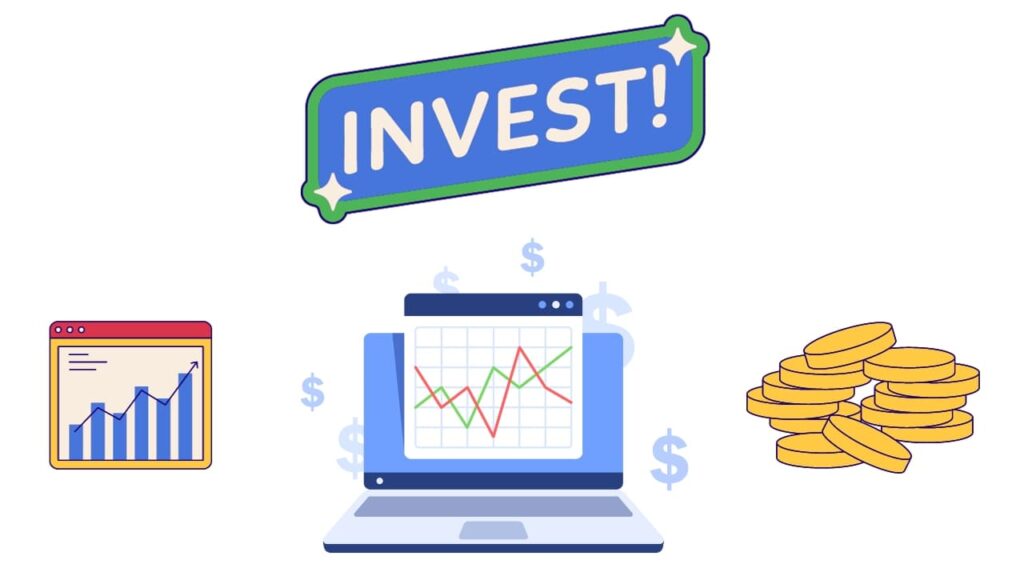
Where can I invest in the S&P500
You don’t trade directly with the S&P 500; it’s just an indicator. Instead, you trade in stocks with the actual companies or via a tracker fund which follows the S&P500.
Most traders in the UK use an investment platform. These allow you to buy index funds from various companies and sectors.
These platforms are generally very user-friendly, allowing more people to understand how an index fund works and invest wisely.
A few popular platforms are:
eToro
Hargreaves Lansdown
InvestEngine
Discover your financial independence with our hand-picked investing apps designed specifically for beginners - it's wealth-building simplified.
How to invest in the FTSE 100 Or 250
The FTSE (Financial Times Stock Exchange) 100 represents the top 100 stocks on the London Stock Exchange. The FTSE 250 represents the 250 stocks following the top 100.
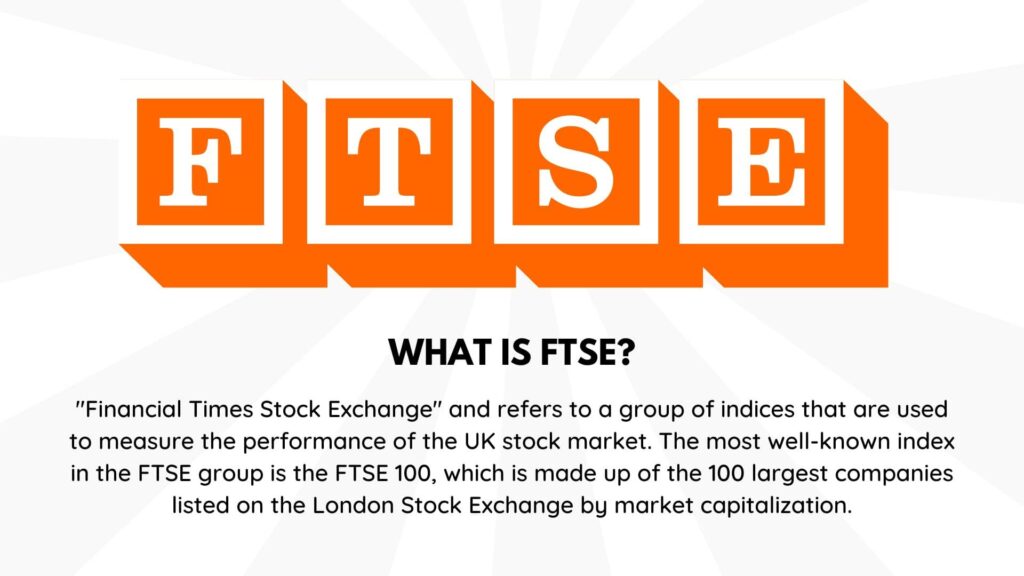
As I mentioned: you can’t buy stocks directly here. You can invest in index funds on trading platforms to purchase stocks for the listed companies.
Examples of The FTSE 100
Here are some of the top funds on the FTSE 100:
Unilever Group
Shell
British American Tobacco
AstraZeneca
How to invest in the FTSE
The process is basically the same as above. You simply:
Open an account with your chosen platform or platforms
Deposit your money
Select your index funds for investment

FAQs
How much tax do you pay on index funds in the UK?
This depends on several factors, but the shortest answer is: you pay capital gains tax of 10% or 20% on anything from which you profit. The percentage depends on which tax bracket you fall under.
What are the average returns on index funds in the UK?
On average the FTSE has provided around a 5% return on investments over the past 35 years.
Roundup
Learning how to invest in index funds in the UK can be daunting at first, which can be frustrating for keen investors wanting to get a running start.
I recommend doing your research to ensure you’re investing in suitable funds that align with your overall goal.
There are some fantastic trading platforms to help you along. This is really important at the start because assessing charts and making wise investment decisions takes many years of experience.
I hope my guide on getting started with Index Funds investing in the UK helps you reach your goals. Remember, stick with it – Rome wasn’t built in a day!
Looking for more info? Here are 5 ways to invest on a low-income salary.
MORE LIKE THIS
Share on social media
Disclaimer: Content on this page is for informational purposes and does not constitute financial advice. Always do your own research before making a financially related decision.

